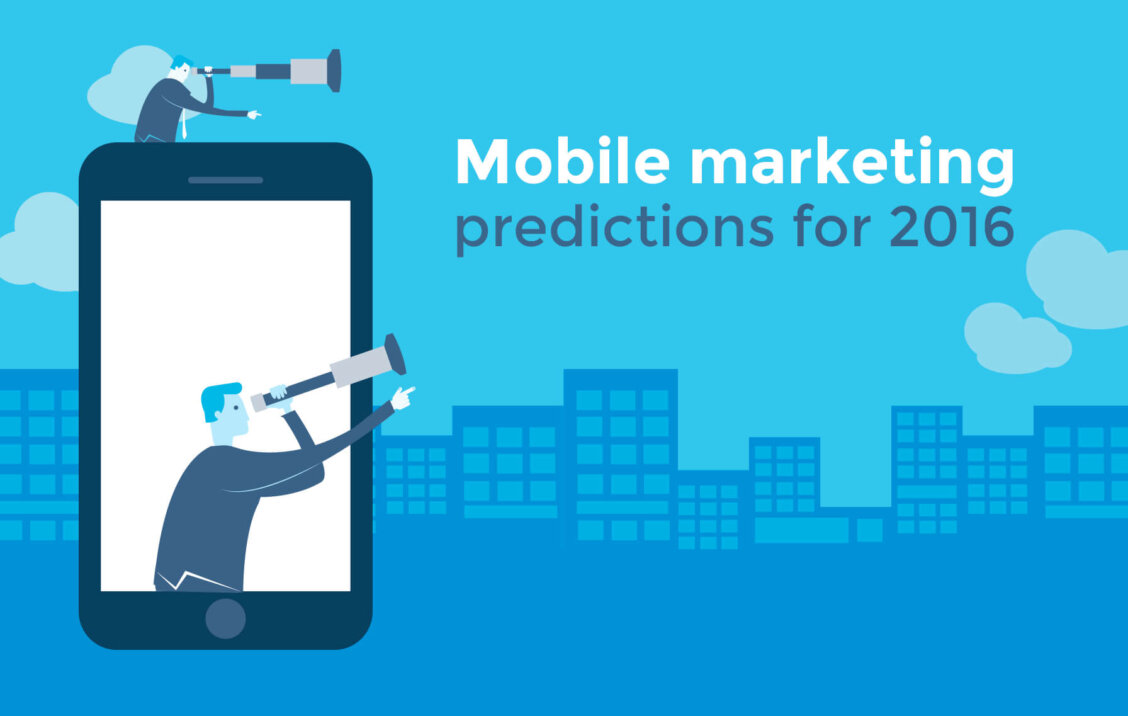
Four Mobile Marketing Predictions for 2016
With 2016 only days away, we thought it would be nice to reflect on some of the great advances the mobile marketing industry made in 2015. But then we thought better of ourselves and realized it would be much more exciting to take a look into the future of mobile marketing instead.
Our calendar years are often marked by the major trends and shifts that shape the way we work, from ad technology to ad creative. With that in mind, the Liftoff team came up with four predictions that will have a major impact on mobile marketing in 2016.
1) Increased personalization of mobile advertising
Mobile advertisers are already taking advantage of a ton of user data when targeting new users for app install campaigns, but we expect to see even greater use of that data in 2016, particularly location data.
Using IP addresses of phones connected to Wi-Fi, a smartphone’s built in GPS, simply asking users for their location during app registration, or any combination of the three, marketers can add a layer of geo-personalization to their campaigns.
For instance, a travel app may track weather patterns and use use that data to promote weekend getaways to users in a region that’s expected to experience inclement weather. Similarly, food delivery apps might use local weather data to dictate their advertising, knowing that users are likely to order dinner in rather than head out in a storm.
Brands that aren’t mobile-only, like a retail shop, might track users who added items to a cart but don’t purchase. Using location data, marketers can later re-engage that user when they’re close to the store, enticing them to visit the store and complete the transaction. Geo-personalization presents marketers with a ton of new engagement opportunities to explore, and we predict that savvy marketers will take full advantage in 2016.
2) A greater focus on post-install performance
Historically, mobile marketers have run app install campaigns on a cost per install (CPI) basis, relying on a percentage of them to convert into engaged users while eating the cost of the installs that don’t convert. But in recent years, there’s been a shift seeing marketers place a greater emphasis on post-install performance as marketers are looking to their partners to help them generate target actions, not installs. Common examples of target actions include making a purchase, subscribing to a service, or booking a reservation.
The reason for this shift is that marketers, who are responsible for growing mobile revenue, are more interested in acquiring users who are most likely to engage with their app than driving a massive number of unengaged new installs. As the mobile marketing industry continues to grow and become more sophisticated, expect marketers to continue their shift away from measuring success based upon CPIs.
3) Interactive ads become the next big thing in creative
Ad creative will continue evolving in 2016, and interactive ads are primed to become the breakout hit. While video and animated ads give potential users a preview of how an app works, interactive ads allow them to actually engage with the app before install. For example, instead of getting a screenshot of gameplay, an app marketer can give users a chance to play a demo of their game before sending users to the app store to download it.
Given the success that visually immersive marketing like video and animated ads already show, it’s not too hard to predict that interactive ads will generate even more high quality users for mobile marketers in 2016.
4) Cross-device attribution tracking becomes more accurate
Tracking users and properly giving ad networks credit for driving installs or actions is tough enough for mobile-only apps. But when apps operate and get advertised on multiple devices, it’s even more difficult for ad networks – which are judged entirely on performance – to prove that they’re generating quality installs and engaged users for their advertisers and partners.
For multi-device apps, it’s common for users to click through an ad and sign up on one device, install it on their other devices, and later upgrade to a premium service on the second or third device the app has been installed on. During this time, the user has been served ads for the app on all three devices, making it tough to tell where credit for the upgrade is due. Even the second and third install are hard to track – they may be incorrectly considered organic because marketers don’t have the ability to credit a mobile ad network for a desktop install.
We expect that in 2016, attribution tracking technology companies will continue to advance and give more marketers more visibility into the ads, apps, and events that are driving engagement and conversions.
There you have it, four predictions for an exciting 2016 in mobile marketing. While we’re never 100% sure what’s going to happen next, at Liftoff we’re excited to experience first-hand the trends and technologies that will shape the future of our industry.